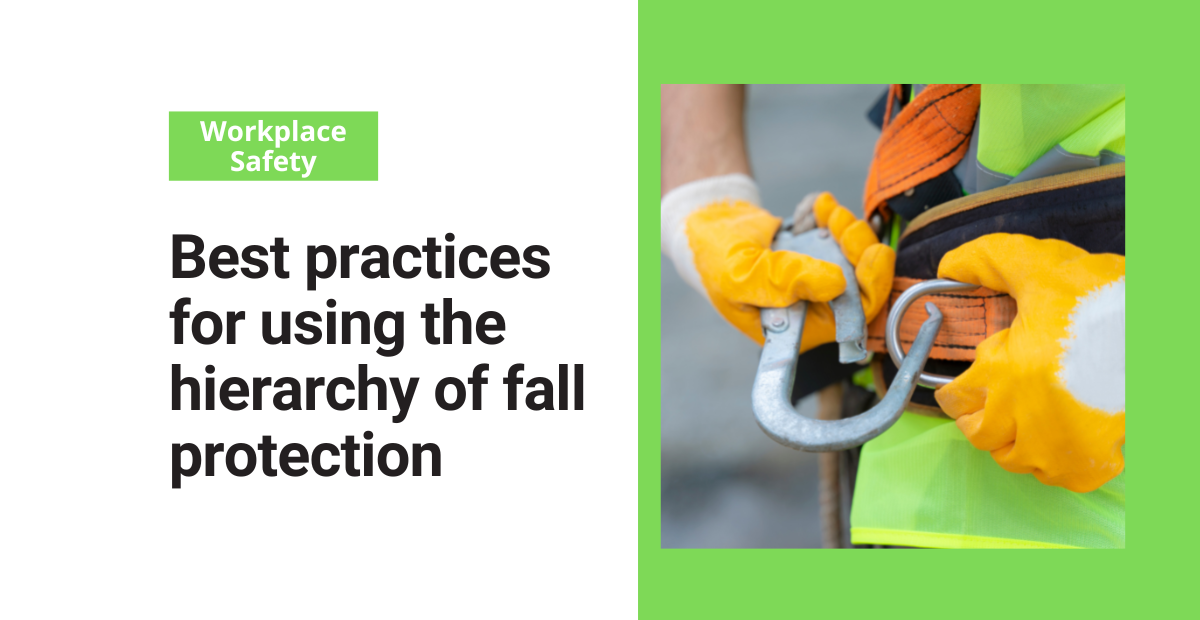Working 4 feet above ground level in general industry requires some sort of fall protection. The hierarchy of fall protection is a simple system that guides workers on how to choose the right type of fall protection for their job site or task at hand. Similar to the hierarchy of controls, it’s a useful tool to help determine the measures of both fall prevention and fall protection. But we must say, it is just one part of a comprehensive fall protection plan.
You should always try to use the method that provides the greatest level of safety first, and then move on to less effective ways only if necessary.
Hazard elimination
Hazard elimination is the safest and most recommended method within the hierarchy of fall protection. It takes away the “fall” element by keeping workers on ground level.
An example would be using extension poles to reach high surfaces instead of relying on ladders. Hazard elimination can also help guide you on which equipment you need to invest in to keep your workers safe.
Passive fall protection
Passive fall protection ensures you don’t have to do anything out of the ordinary to prevent the fall. It forms a physical barrier between the worker and the area where a fall hazard is present.
Any openings or holes on the floor that go deeper than 6 feet should be covered with a material that can support twice the weight of any equipment, worker, or vehicle that may pass over it. Writing “hole” or “cover” on the cover also helps ensure its visibility.
Passive fall protection can also be achieved through guard rails. Guard rails are made up of top rail, mid rail, toe board, and anchoring posts. The rail must be strong enough to withstand up to 200 lbs. of force in outward or downward positions.
Another method of passive fall protection is safety nets. The holes in the net should not exceed 6 inches and the condition of the net should be inspected weekly.
An example of passive fall protection would be setting up guard rails when working around trenches to ensure no one falls in.
Fall restraint systems
Fall restraint systems are when PPE is used to restrict the worker’s range of movement to prevent falls. The system cannot be used without proper training. It is different from fall arrest systems in the fact that it tethers the worker from falling any distance. The PPE used in fall restraint systems can include body belts, harnesses, anchorage, and connectors. The system must be able to withstand up to 5000 lbs. of force.
Although OSHA doesn’t mention “fall restraint systems” within their fall protection rules, they do accept them in place of fall arrest systems when it is appropriately used. To ensure maximum safety, a restraint system could be used alongside passive fall protection.
An example use of a fall restraint system would be being attached to an overhead anchor point when roofing. Make sure the anchor point is close or directly above the worker to avoid the force of impact in case the worker swings. If there is no overhead anchor point available, it might be better to invest in a fall arrest system.
Fall arrest systems
Fall arrest systems not only require training but they also require you to have a rescue plan. PPE is used to arrest the fall within clearance margins and acceptable force. Arrest systems enable the most amount of movement while protecting workers from sudden impact and the risk of freefall.
The PPE includes a full-body harness, lanyard, snap hooks, ropes, straps, and anchorage points. Body belts can be used for positioning, but they cannot be used to ensure fall protection. Aside from training and having a rescue plan, the worker using the fall arrest system must understand how to use the product and maintain the equipment.
An example of a fall arrest system in use could be when climbing steep hazardous stairways on above-ground tanks or silos.
Administrative controls
Administrative controls are the last resort for protecting workers and are not recommended. It relies on creating awareness around the hazards but does not directly protect workers from falling. Using warning signs and training employees are some methods of implementing administrative controls.




